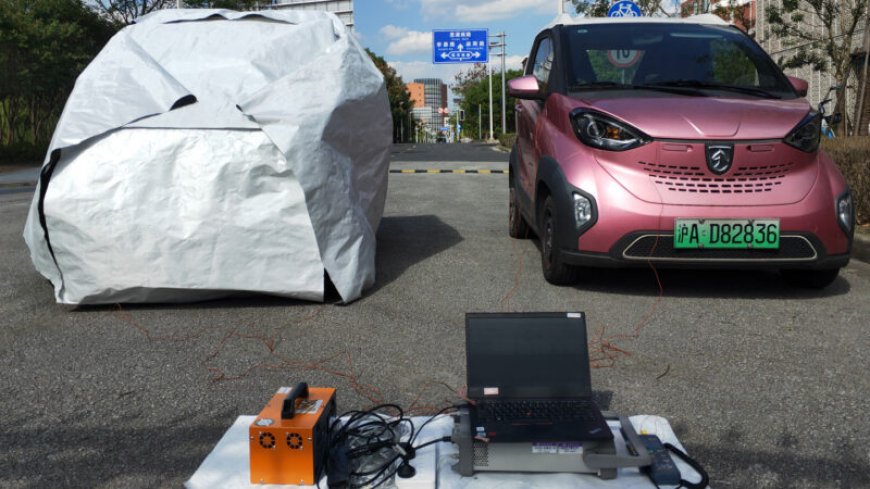This ‘thermal cloak’ keeps spaces from getting either too hot or cold
A new thermal fabric prototype could help keep cars, buildings and other spaces a comfortable temperature during heat waves while reducing CO₂ emissions.

If you’ve ever burned your hands on a car steering wheel, you know how hot the inside of a car can get on a summer day. But a new fabric could one day help cars and other objects stay cool in the summer and warm in the winter.
Researchers created a prototype of the fabric, which acts as a “thermal cloak” that keeps the space underneath it from getting too hot or too cold. The cloak, described in the July 11 Device, doesn’t require an external power source, which could reduce energy consumption associated with heating and cooling (SN: 9/28/18).
Globally, heating and cooling make up 38 percent of energy use in buildings and 12 percent of total energy consumption. Materials like this thermal cloak could help keep us comfortable during heat waves while reducing carbon dioxide emissions associated with electricity used in temperature control, says Aaswath Raman, an applied physicist at UCLA who was not involved in the study.
In the new study, Kehang Cui, an engineer at Shanghai Jiao Tong University, and colleagues built the cloak using two layers. The outer layer is made of white silica fibers that reflect visible light, coated with hexagonal boron nitride, a ceramic material that reflects ultraviolet light and helps dissipate heat. Together, the silica fibers and boron nitride reflect 96 percent of the sunlight that hits the fabric. At the same time, the outer layer absorbs heat from the surrounding area and emits that energy as infrared light, which also lowers the temperature under the cloak through a process called radiative cooling.
Though the outer layer keeps the space under the cloak cooler for longer than an uncovered area, the cloaked space slowly warms up throughout the day. The inner layer, made of aluminum foil, keeps the space warm at night by trapping some of that heat inside, similar to an insulating survival blanket.
The researchers tested the cloak material’s durability under several extreme conditions. They baked the fabric at 800° Celsius, just about hot enough to melt table salt. They also exposed it to extreme cold by dunking it in liquid nitrogen, subjected it to the same amount of vibration as a rocket launch, doused it in acid and blasted it with fire from a butane torch — all with virtually no changes to the material’s structure or performance. This extreme durability might lend itself to use in spacecraft or extraterrestrial environments, the team says.
To see the fabric in action, Cui and colleagues built a full-size prototype cloak and tested it on an electric car. On a summer day in Shanghai, the cloak kept the car at about 23° C — up to 8 degrees C lower than the outside temperature and 28 degrees C lower than the inside of an uncloaked car. The cloak also kept the car about 5 degrees C warmer than the outside air on a winter night.
The cloak “definitely shows the capability of saving energy, but the next step is that we want to demonstrate it in even larger-scale field tests [such as rooftops] to see the impact on our daily lives,” Cui says.
What's Your Reaction?



























































